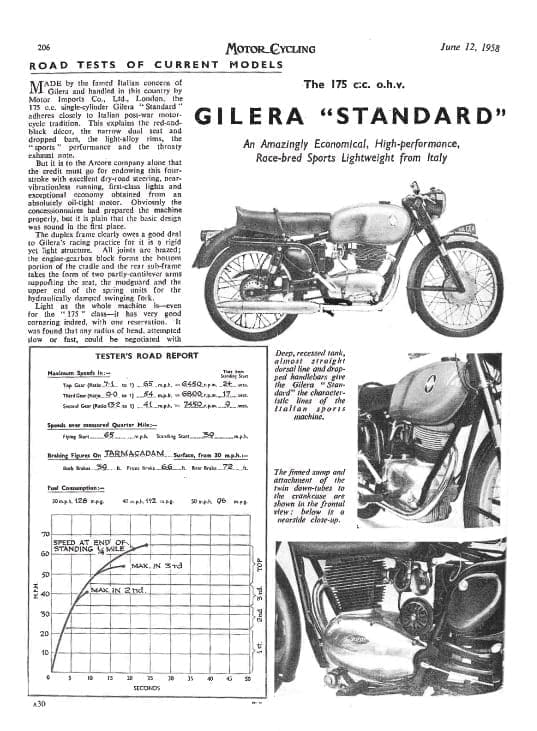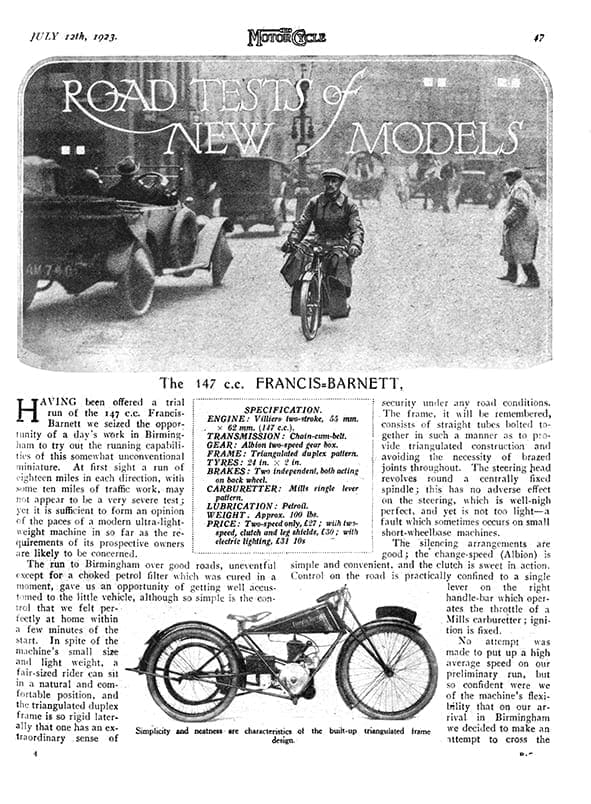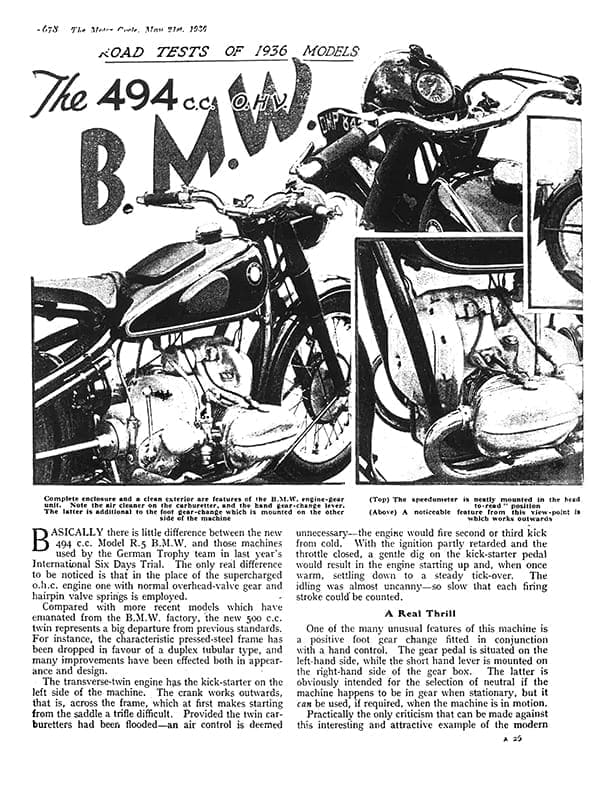Description
Francis Barnett 147cc 1931 Road Test – PDF Download
The new 147. c.c. Francis-Barnett has been de-signed for those who are prepared to pay a few pounds more for an engine with a capacity that takes full advantage of the 150c.c. tax concession, and a machine with more comprehensive equipment and detail work than the average 98 c.c. model.
In spite of the machine’s small size, a six-foot rider felt perfectly comfortable when he got into the saddle, and the comparatively wide tank gave him that impression of robust ness which is so important for inspiring confidence in a machine. The positions of both bars and rests gave an ideal riding position for normal work, and all the controls were delightful in action, the clutch in particular being so light that it was difficult to believe that it was coupled up.
Starting was an affair of one easy kick, when the mixture-adjustment lever had been moved to the ” rich ” position; it could be returned to the normal running position after the engine had idled for a minute or so. The clutch was smooth and the direct-gear operation quite the simplest possible, the lever being long enough for comfort, yet not in the way of the knees. In fact, the whole business of riding has been reduced to the simplest possible denominator in this lightweight.
For such a small machine the steering was extraordinarily good, though at first it was thought to be over-light. On several occasions the Francis-Barnett was ridden ” hands off” and swayed about roughly, without any loss of stability, and, after the bars had ·been pushed, the machine immediately re-turned to a straight course. Even on bad roads it was not uncomfortable and did not ” buck 11 unevenly over ridges. Weather comfort on the twenty-one-guinea type tested is immensely assisted by the very efficient leg shields fitted. They extend up to the knees, and on any but a long run in heavy rain no waders or leggings were necessary.
Advert
 Enjoy more The Classic MotorCycle reading in the monthly magazine. Click here to subscribe.
Enjoy more The Classic MotorCycle reading in the monthly magazine. Click here to subscribe.








